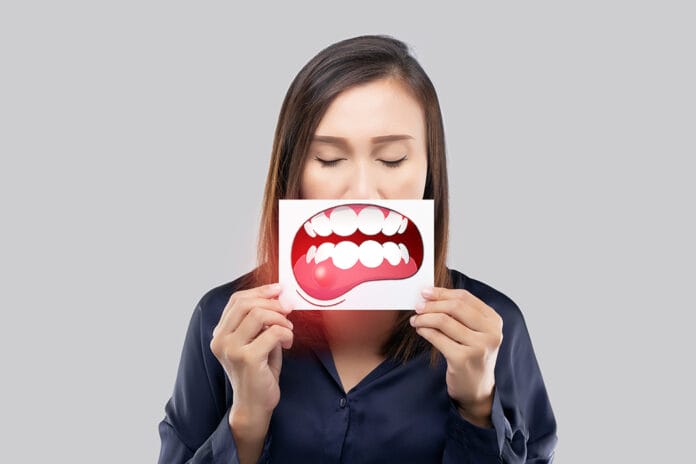A study spearheaded by the University of Hong Kong’s Dentistry Faculty, in partnership with various global institutions, has successfully showcased the power of artificial intelligence (AI) in identifying gingivitis through intraoral photographs with higher accuracy than other AI diagnostic systems.1
Other AI diagnostic systems that are currently used to detect gingivitis using intraoral photos have an accuracy ranging from 47-83%. However, 90% or above accuracy for any diagnostic system used clinically should be the target goal. Developing an AI system with high sensitivity and specificity that parallels a human clinician has the potential to monitor the effectiveness of patients’ plaque control.1
The Study
The researchers’ objective was “to develop and to validate a novel AI system that can be used to diagnose gingivitis on intraoral photographs with accuracy at or above 0.90. The hypothesis of this study was that a novel AI system built with DeepLabv3+, after training with adequate number of intraoral photographs, would be able to predict the gingival health status with accuracy, in terms of sensitivity and specificity, at or above 0.90.”1
A total of 572 potential participants were screened for the study. Four were excluded due to insufficient anterior teeth and one due to being under 18 years of age. Eventually, 567 participants were recruited. Anterior-view intraoral photos were taken from these participants, totaling 567 images. About 80% (453 images) were used for training, and the rest (114 images) for validation.1
The training images contained a total of 113,745,208 pixels, labeled as healthy (pink, smooth, no bleeding), diseased (white/red patches, generalized redness, ulcerated, bleeding), or questionable (red, inflamed, rough). The validation images had 28,319,607 pixels with similar labels.1
The Results
The research, published in the International Dental Journal, demonstrates that AI algorithms can scrutinize patients’ intraoral photos to detect signs of inflammation and bleeding along the gingival margin with over 90% accuracy, on par with human visual examination. Specifically, the researchers’ AI system showed a sensitivity of 92% and specificity of 94%.1
Dr. Walter Yu-Hang Lam, the study’s lead researcher, states, “Many patients skip regular dental check-ups, only seeking dental help to relieve pain when their teeth are in the final stages of dental diseases. At this point, tooth loss is unavoidable, and only costly rehabilitative treatments are available. Our study indicates that AI can be an invaluable screening tool in detecting and diagnosing gingival inflammation, a major indicator of periodontal disease, enabling earlier intervention and improved health outcomes for the public.”2
Study Limitations
This study has several limitations, one being that the training of the AI program was based on individuals of Chinese ethnicity; therefore, the results may not be the same for Caucasian, Black, Latino, or other ethnicities. Additionally, the technology has not been evaluated for efficacy based on various local and systemic modifying factors. Lastly, the authors suggest further studies to evaluate the accuracy of the technology.1
Conclusion
The application of AI in dentistry has been gaining traction, with researchers investigating various uses of the technology, from identifying dental caries to predicting treatment outcomes to designing artificial teeth. The use of AI in detecting gingival inflammation is a promising advancement that could transform how gingivitis is identified, treated, and even prevented.1
Further, utilizing this technology in public health settings could provide a noninvasive screening tool to identify early signs of gingival inflammation. Similar to providing oral cancer screenings at health fairs and the like, this technology could be used as a screening tool in these venues to provide individuals with a better understanding of their oral health status.
Looking ahead, the lead researcher intends to deploy the AI system for community services, making the technology more accessible to elderly and underserved communities, with the goal of enhancing oral health outcomes and reducing health disparities.2 This development could be a game-changer for dental hygienists, offering a powerful new tool for early detection and personalized care.
Before you leave, check out the Today’s RDH self-study CE courses. All courses are peer-reviewed and non-sponsored to focus solely on high-quality education. Click here now.
Listen to the Today’s RDH Dental Hygiene Podcast Below:
References
- Chau, R.C.W., Li, G.H., Tew, I.M., et al. Accuracy of Artificial Intelligence-Based Photographic Detection of Gingivitis. International Dental Journal. 2023; 73(5): 724-730. https://doi.org/10.1016/j.identj.2023.03.007
- The University of Hong Kong. (2023, June 28). AI for Early Detection of Gum Inflammation. ScienceDaily. www.sciencedaily.com/releases/2023/06/230628130444.htm











